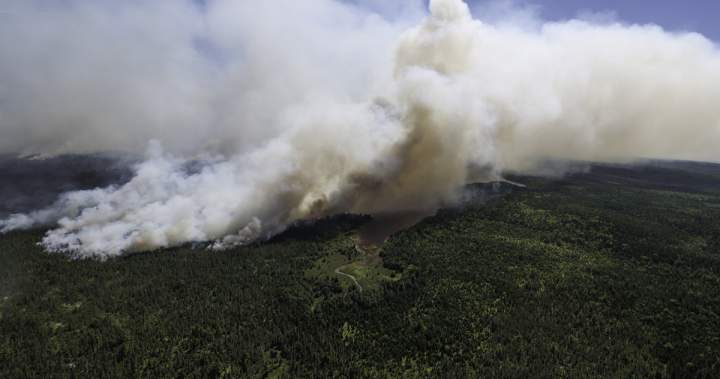While the fire in Annapolis Valley is now estimated to be more than 8,000 hectares in size, Nova Scotia officials say no more homes have been damaged as a result.
Over the weekend, winds connected to Hurricane Erin caused the Long Lake wildfire to blow up in size while also damaging a number of homes in the West Dalhousie area of Annapolis County.
Officials have said they won’t release exact figures on how many homes are damaged until the victims have been notified.
The province said the blaze has spread all around Paradise Lake and that 150 firefighters from across the province and Ontario are battling it.

Get daily National news
Get the day’s top news, political, economic, and current affairs headlines, delivered to your inbox once a day.
“Crews are focusing on the east side of Paradise Lake, aiming to prevent spread to Trout Lake,” a Facebook post noted on Tuesday morning.
Nova Scotia said that members of the Department of Natural Resources have responded to 17 calls over the past four days in addition to the ongoing fire fights.
Firefighters were hoping that rain forecast for Monday would help suppression efforts, but Dustin Enslow, deputy warden of the County of Annapolis, said that help didn’t materialize.
“Unfortunately, we got very little, I think we got about four millimetres,” Enslow told The Canadian Press.
Still, overcast skies and relatively cooler conditions over the last two days have slowed the fire’s advance, he said.
“Weather like today is actually good firefighting weather, although it does restrict the aircraft support because they (pilots) need over one kilometre of visibility,” Enslow said.
Enslow said more than 1,000 people have fled their homes in the area and more than 250 people have registered at a shelter at the Nova Scotia Community College campus in nearby Middleton.
Environment Canada says smoke from the wildfire has reduced air quality in Annapolis County and as far away as Halifax, located about 125 kilometres southeast.
Enslow says it remains difficult for firefighters to assess damage because of the dangers in accessing the fire zone.
— With files from The Canadian Press
Read the full article here
